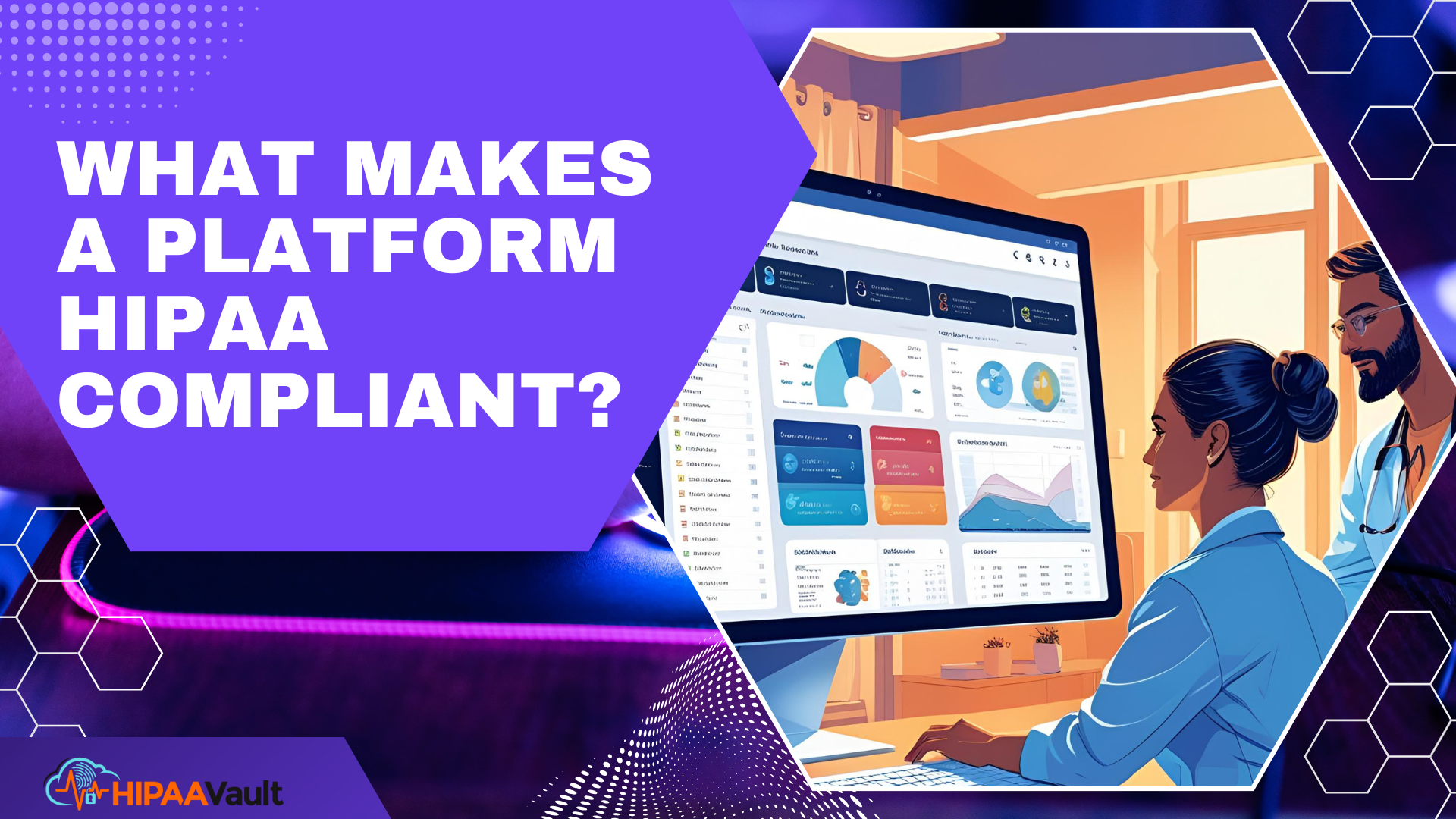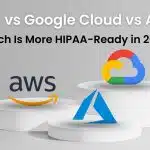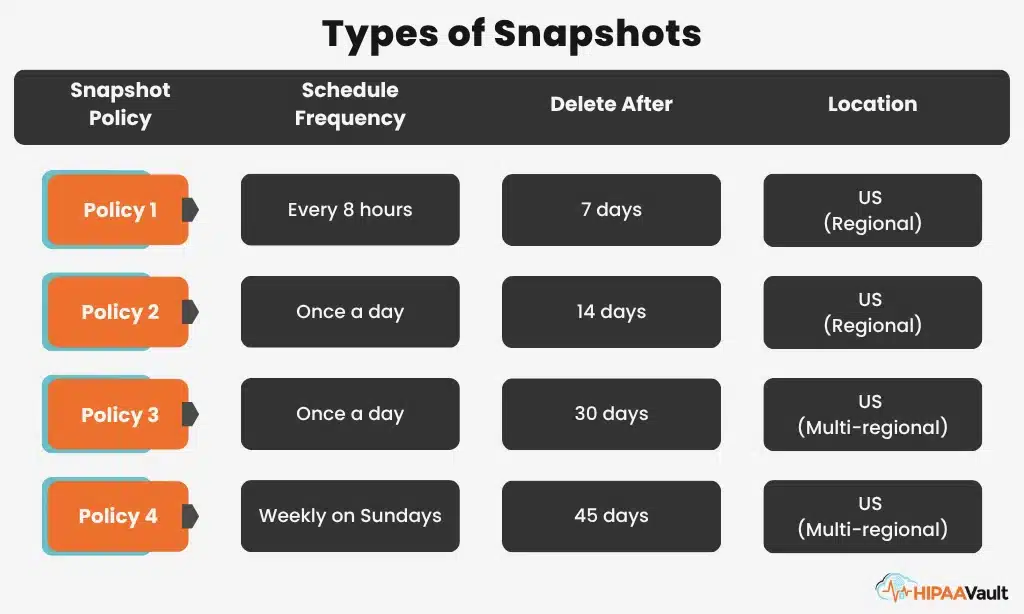In today’s rapidly expanding digital health ecosystem, platforms that handle patient data are becoming essential tools — from telemedicine apps and EHR systems to patient portals and cloud-based scheduling tools. But with this wave of innovation comes a critical responsibility: protecting Protected Health Information (PHI) under the Health Insurance Portability and Accountability Act (HIPAA).
If your platform stores, transmits, or processes PHI on behalf of healthcare organizations, HIPAA compliance isn’t optional. It’s foundational. In this guide, we’ll explore what makes a platform HIPAA-compliant, including the administrative, physical, and technical safeguards every developer, IT team, and SaaS vendor must address.
Why HIPAA Compliance Matters for Healthcare Platforms
Platforms that interact with PHI — whether through form submissions, chat logs, file storage, or appointment records — are considered business associates under HIPAA if they provide services to covered entities like hospitals, physicians, or insurers. This designation comes with strict obligations for data security and privacy.
Beyond the legal requirements, compliance signals professionalism and trustworthiness. Patients are more likely to engage with tools that safeguard their health data. Meanwhile, healthcare providers won’t risk doing business with platforms that haven’t demonstrated regulatory readiness. Civil penalties for noncompliance can reach up to $50,000 per violation, with a cap of $1.5 million annually. Those numbers underscore the importance of building compliance in from the start.
Department of Health and Human Services (HHS) – HIPAA Security Rule Summary
Understanding HIPAA’s Scope for Platforms
HIPAA compliance applies when a platform interacts with any combination of personal identifiers and health-related data. For example, scheduling tools that collect names and appointment reasons, chatbots that log symptoms, and image-sharing platforms for radiology all handle PHI.
Even if a service doesn’t directly offer healthcare, storing or processing ePHI on behalf of a covered entity makes it a business associate. That means it must adhere to HIPAA’s rules or risk steep penalties. The type of platform doesn’t matter — what matters is the presence and handling of sensitive patient data.
The Three Pillars of HIPAA-Compliant Platforms
Administrative Safeguards
Administrative safeguards are the internal strategies and processes that support your platform’s compliance. At the core is a documented risk analysis that identifies vulnerabilities and outlines mitigation strategies. This is not a one-time assessment but a living process that evolves with the platform.
Leadership must appoint a dedicated security officer responsible for overseeing HIPAA-related matters. Additionally, workforce training is crucial. Every employee who interacts with PHI should understand HIPAA basics, social engineering risks, and secure handling procedures.
Incident response planning is also essential. Platforms need defined protocols for detecting, reporting, and responding to data breaches or attempted intrusions. Having these plans in place — and routinely testing them — can mean the difference between quick recovery and catastrophic exposure.
Physical Safeguards
Physical safeguards address the tangible elements that support your platform’s infrastructure. This includes data centers, endpoint devices, and workstation environments. Servers that store PHI must be housed in secure facilities with restricted access, monitored entry points, and environmental controls like fire suppression and redundant power.
If your team uses laptops or desktops to manage backend systems, device security must be enforced through policies for physical access, use, and disposal. Stolen laptops are a frequent cause of HIPAA violations. Having mobile device management (MDM) in place, encryption on all drives, and remote wipe capabilities is key to mitigating risk.
Using a compliant cloud hosting provider like HIPAA Vault also addresses many of these concerns. Our facilities maintain strict access controls and environmental standards — relieving developers of the burden of physical infrastructure compliance.
Technical Safeguards
Technical safeguards are the systems and tools used to protect ePHI on your platform. HIPAA requires that each user accessing PHI be uniquely identified — meaning no shared logins or generic admin accounts. Platforms should enforce robust authentication methods, including strong passwords and, ideally, multi-factor authentication (MFA) for administrative access.
Encryption plays a central role. Data in transit should be secured using TLS 1.2 or higher, and stored data should be encrypted with AES-256 or FIPS-validated cryptographic modules. While HIPAA designates encryption as “addressable” rather than mandatory, it’s a practical standard that is widely expected by regulators and clients alike.
Audit logging is also required. Every access, update, or deletion of PHI should be recorded, along with the timestamp and user identity. Logs should be monitored in real-time or aggregated into a centralized system like a Security Information and Event Management (SIEM) platform to detect suspicious behavior.
Secure Development Best Practices
Developers play a pivotal role in HIPAA compliance. A secure Software Development Lifecycle (SDLC) should integrate compliance checks and security tooling from the outset. For example, static code analysis tools can automatically flag insecure patterns before code is deployed.
Secrets management is another crucial element. Environment variables, API keys, and database credentials must be stored securely, not hardcoded into applications or stored in plain text. Tools like HashiCorp Vault or AWS Secrets Manager can simplify this.
Finally, ensure your development, staging, and production environments are properly segmented. ePHI should never appear in development or test environments. Implementing infrastructure as code and automating environment provisioning with compliance built in helps avoid configuration drift and human error.
Hosting: The Compliance Foundation
HIPAA compliance begins with secure infrastructure. Even a perfectly coded application can fall short if it runs on noncompliant servers. Choosing a HIPAA-compliant hosting provider ensures that the underlying platform is hardened, encrypted, and monitored in line with regulatory standards.
HIPAA Vault offers pre-hardened cloud environments that include signed Business Associate Agreements, 24/7 intrusion monitoring, automated patching, and geographically redundant data centers. This eliminates much of the operational overhead for healthcare developers and SaaS providers.
Learn more: https://www.hipaavault.com
When Platforms Miss the Mark
HIPAA violations are not abstract risks — they’re documented and published by the Department of Health and Human Services. Common failures include unencrypted data transfers, misconfigured access controls, and failure to log PHI access.
For example, in recent years, OCR has penalized healthcare vendors for exposing PHI through unsecured cloud buckets and improperly configured APIs. The public breach list at HHS shows how even minor lapses can result in major consequences.
Check out real cases:
https://ocrportal.hhs.gov/ocr/breach/breach_report.jsf
Conclusion: Compliance as a Strategic Asset
HIPAA compliance is not just about avoiding fines — it’s about building trust and credibility in a market where security and privacy are paramount. Whether you’re a developer, IT manager, or product strategist, implementing HIPAA-compliant practices sets your platform apart.
By understanding the core safeguards, securing your infrastructure, and embedding compliance into your development lifecycle, you’ll be well-positioned to thrive in the digital health landscape.
Looking for an infrastructure partner that checks all the compliance boxes?
Start Building Securely with HIPAA Vault — where cloud hosting meets healthcare-grade protection.








